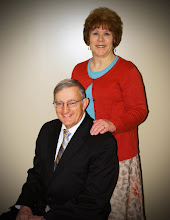
Personal History Video Interview
For the past six years I have been experimenting with video taping interviews with family members. My brother, Sherman, gave me a video copy of an old home movie of my parents who had passed on several years ago. There was no sound but to see them moving around brought back a flood of memories. How I wished that I could have heard their voices as well at the same time. I had recorded my Father’s, James Afton Harward, voice on a trip to Aurora in 1973 as he showed me around the town and recalled memories of growing up there with his brothers and sisters. That recording means so much to me and I am so glad that we took the time to do that little project.
For the past six years I have been experimenting with video taping interviews with family members. My brother, Sherman, gave me a video copy of an old home movie of my parents who had passed on several years ago. There was no sound but to see them moving around brought back a flood of memories. How I wished that I could have heard their voices as well at the same time. I had recorded my Father’s, James Afton Harward, voice on a trip to Aurora in 1973 as he showed me around the town and recalled memories of growing up there with his brothers and sisters. That recording means so much to me and I am so glad that we took the time to do that little project.
I am editing a video taped recording made in 2003 of LaVon and LaVon Harward pictured above. I have made several videos of family members and presented those videos to their children after the passing of those loved ones. None of those children knew that the recordings had been made and it meant a lot to them to have that special remembrance. I highly recommend video taping an interview of your parents while you can and would like to make a few suggestions to you in doing so.
· Use the interview format where someone asks questions that will prompt a person’s memory rather than recite a written presentation. That is not to say that a history should not be written but I suggest that it be written by the person being interviewed and given to the interviewer long enough prior to the interview to develop the questions. This will assist the interview to be more spontaneous and told like a story.
· Record the interview in a familiar but quiet place such as a living room or kitchen with good lighting. Place the camera to the side of the interviewer so that he or she is not in view. Make sure that it is close enough to the person being interviewed to be clearly heard as well as seen.
· Photos can also be helpful in recalling memories as the person tells the stories about them. Those photos may be inserted into the video during the editing process.
· Editing usually requires that the video footage that has been recorded be transferred to a computer where, in most cases, it can be recorded on a DVD. By using editing software the video can be modified, still pictures, and background music can added as well.
· Technology is constantly changing so it is a good idea to make sure that the video camera and the medium by which you display it are compatible. Today, HD (High Definition) and even 3D are being used to capture video on small cards which allows the camera to be a lot smaller for the general consumer. Much more sophisticated cameras used by professional videographers can be used which may accommodate the addition of external microphones, etc.
If you have any questions or if you need help, please contact me via e-mail at russharward@msn.com, on my cell at (801) 362-7716, or at home at (801) 756-5677.
· Record the interview in a familiar but quiet place such as a living room or kitchen with good lighting. Place the camera to the side of the interviewer so that he or she is not in view. Make sure that it is close enough to the person being interviewed to be clearly heard as well as seen.
· Photos can also be helpful in recalling memories as the person tells the stories about them. Those photos may be inserted into the video during the editing process.
· Editing usually requires that the video footage that has been recorded be transferred to a computer where, in most cases, it can be recorded on a DVD. By using editing software the video can be modified, still pictures, and background music can added as well.
· Technology is constantly changing so it is a good idea to make sure that the video camera and the medium by which you display it are compatible. Today, HD (High Definition) and even 3D are being used to capture video on small cards which allows the camera to be a lot smaller for the general consumer. Much more sophisticated cameras used by professional videographers can be used which may accommodate the addition of external microphones, etc.
If you have any questions or if you need help, please contact me via e-mail at russharward@msn.com, on my cell at (801) 362-7716, or at home at (801) 756-5677.

No comments:
Post a Comment